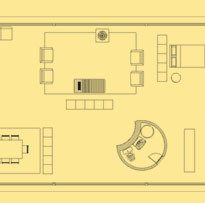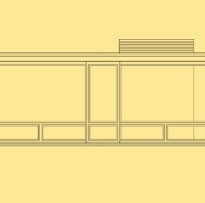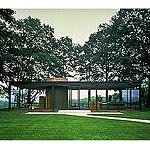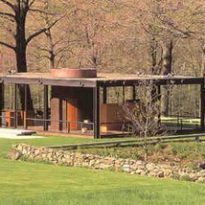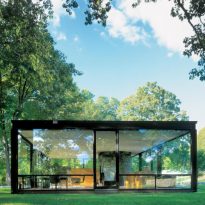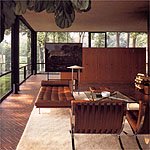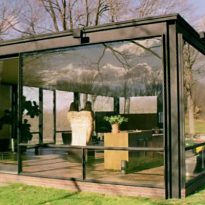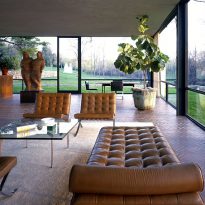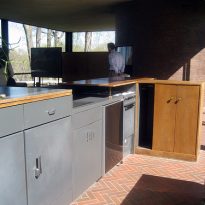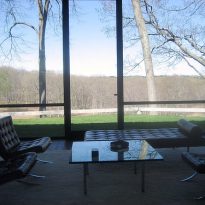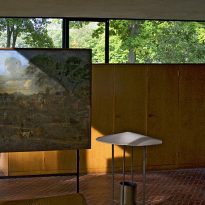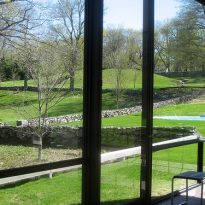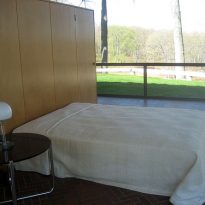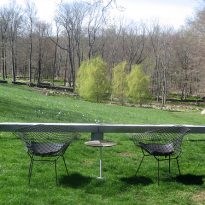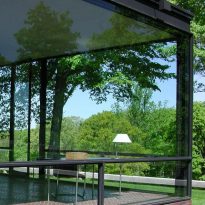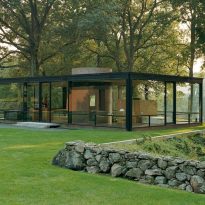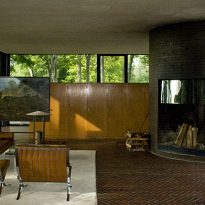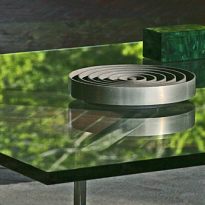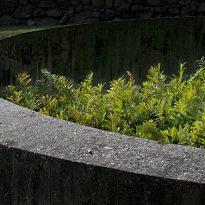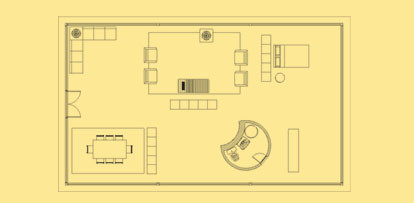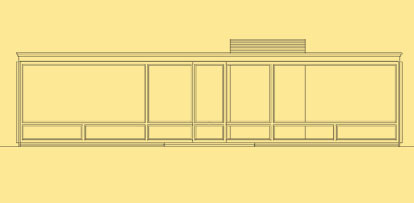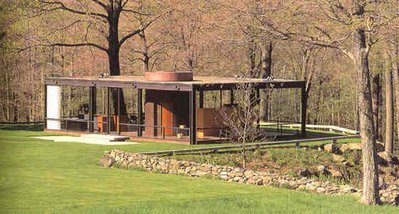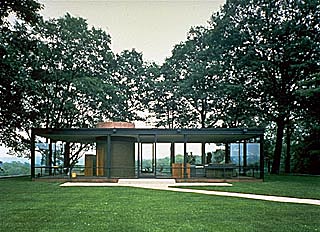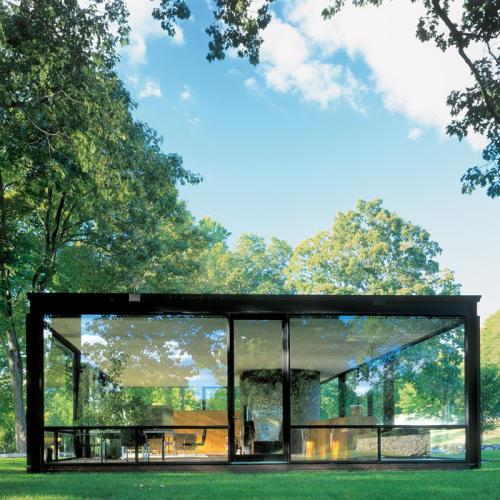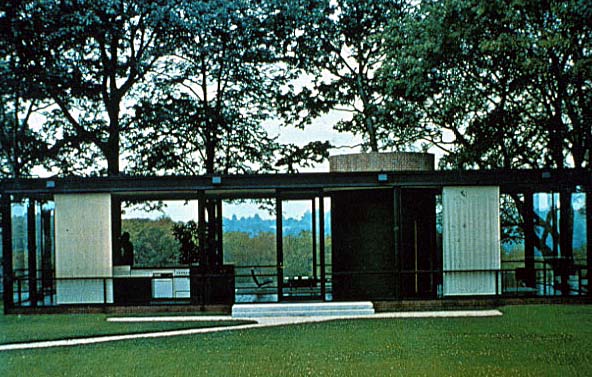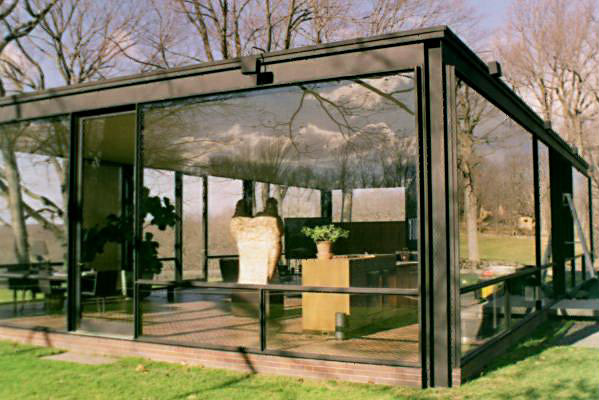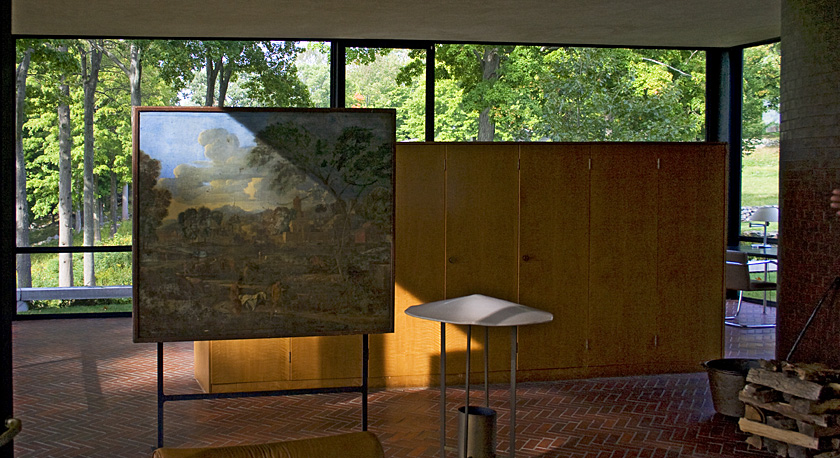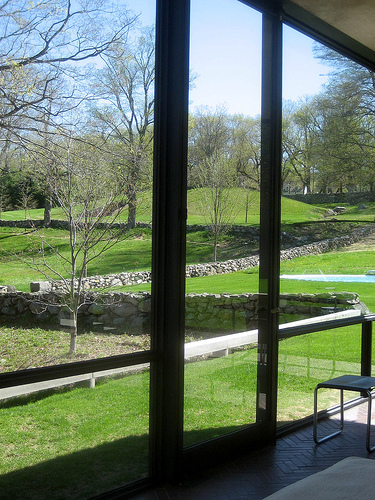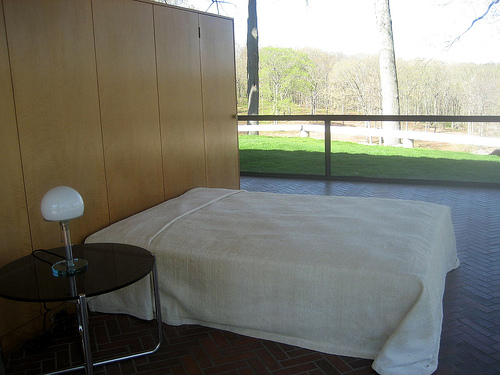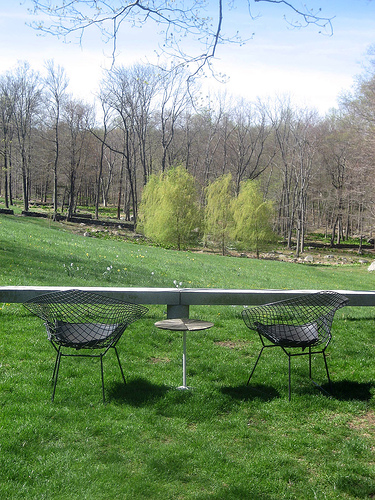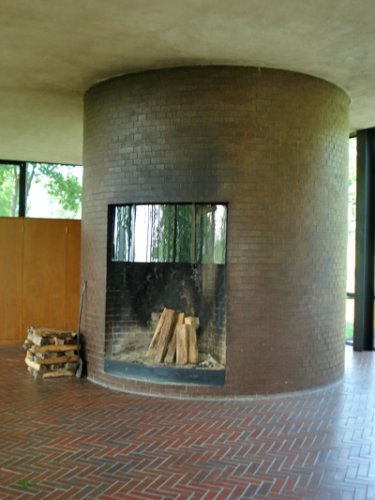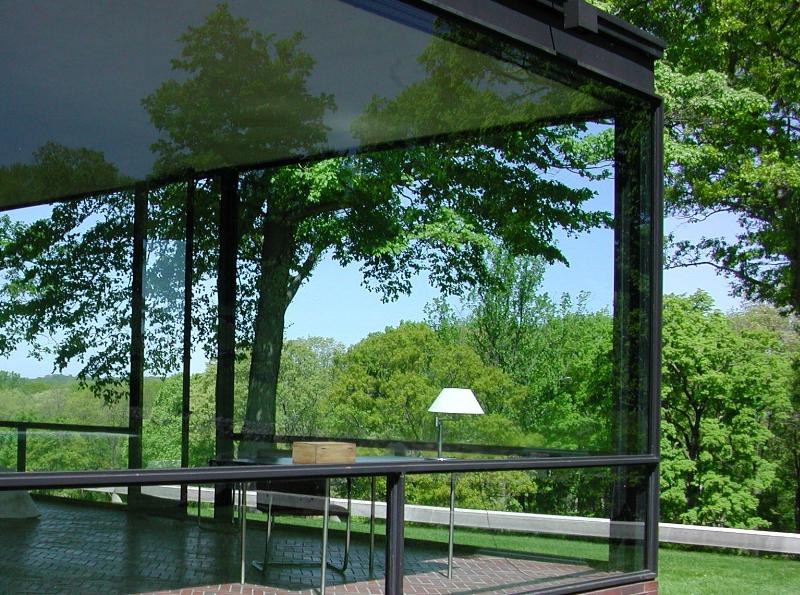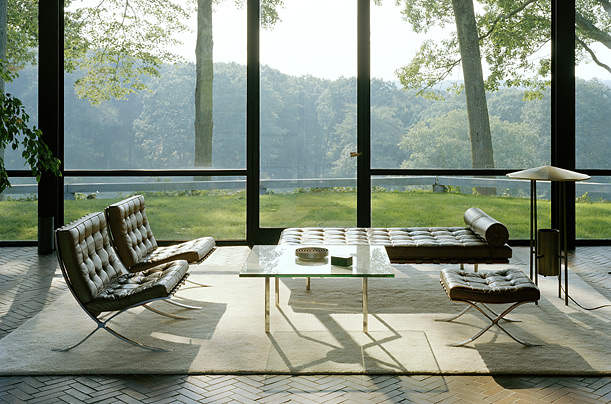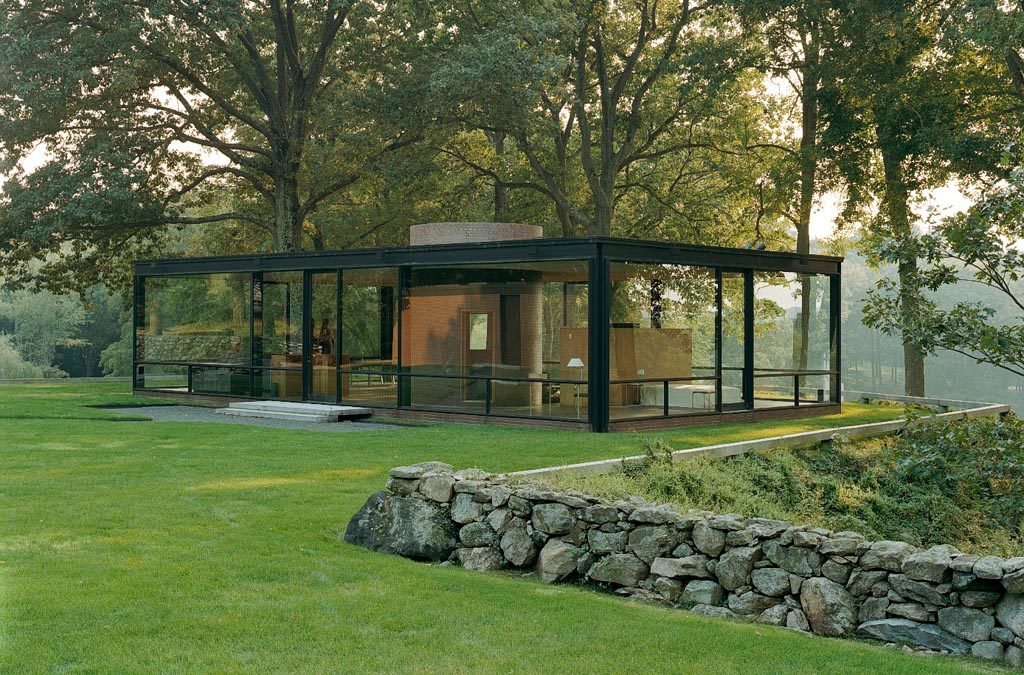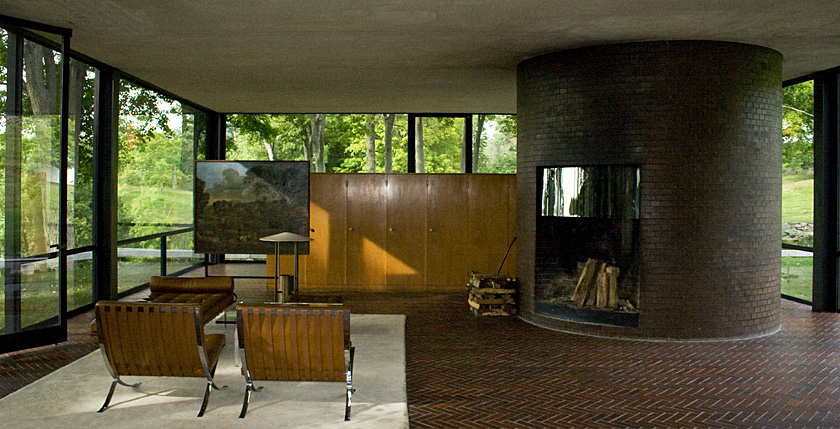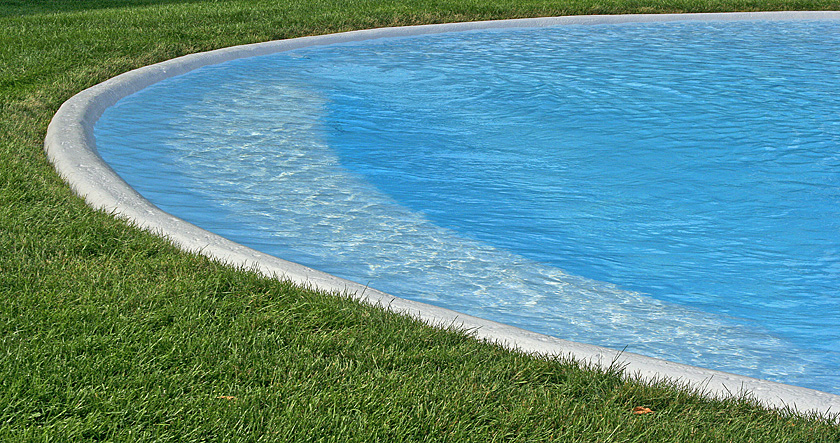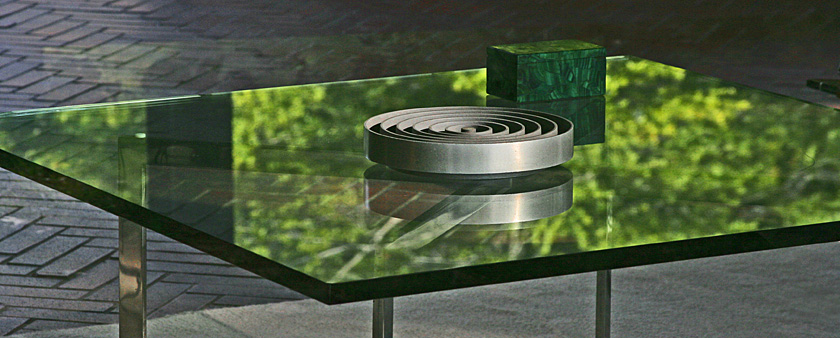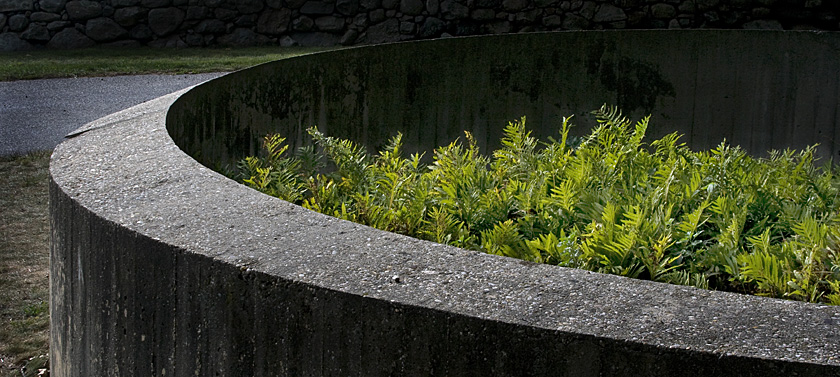Glass House
Introduction
The Glass House stands as one of the seminal works of the American architect Philip Johnson. Many consider the Glass House to have launched his career, and helped him introduce new architectural discourses that have significantly shaped the understanding of 20th-century architecture.
Initially following the steps of the renowned German architect Mies van der Rohe, and later diverging from his teachings, Johnson began crafting the design for his personal residence in New Canaan, Connecticut, USA in 1949.
Location
Nestled on a picturesque plot, trees stand as the sole barrier – acting as boundary walls – that interrupt the visitors’ views through the glass walls. The Glass House is located in Connecticut, United States.
Concept
The Glass House embodies one of Mies van der Rohe’s pivotal architectural tenets: “Less is more.” Here, the materials are minimalistic, the design is economical and stripped of any extraneous ornamentation.
Its basic concept was inspired by Mies van der Rohe’s Farnsworth House, albeit with distinct features, such as its symmetry and the fact taht this house is not elevated from the ground. The interior space is partitioned by low cabinets and a brick cylinder housing the bathroom. Much of Johnson’s Bauhaus furniture still remains within the house.
Symbolism
The Glass House signifies a pivotal moment in the quest for transparency and the adaptability hallmarking European modernity. It undoubtedly represents the zenith of architectural dematerialization.
Description
This house takes the concept of an all-encompassing glass prism to its absolute epitome. Different areas and functionalities of the house are delineated as distinct equipment sectors within a singular space, punctuated only by the fireplace’s structure and the crescent-shaped bathroom cubicle.
Materials
The building’s layout begins with a cube, its silhouette is solely shaped by the finely wrought black steel framework.
The black steel of the frames, coupled with the red brick cylinder that encases the fireplace and bathroom, define the volume of this masterpiece, grounding the composition. This rootedness sets it apart from Mies van der Rohe’s designs, which often seem to ‘float’ in space.
Due to the opaque roof and transparent walls of the Glass House, visitors are blessed with the incredible sensation of being sheltered under a roof without feeling confined within a building. The material’s transparency ensures that the surrounding landscape almost single-handedly shapes the house’s internal ambiance.
